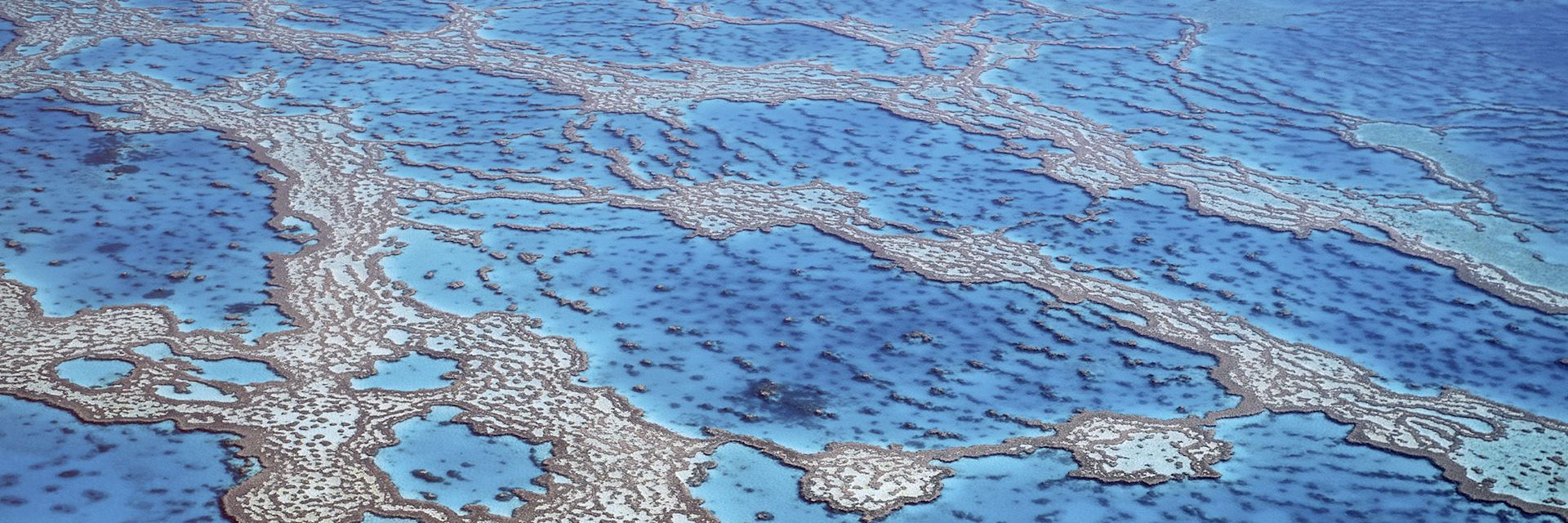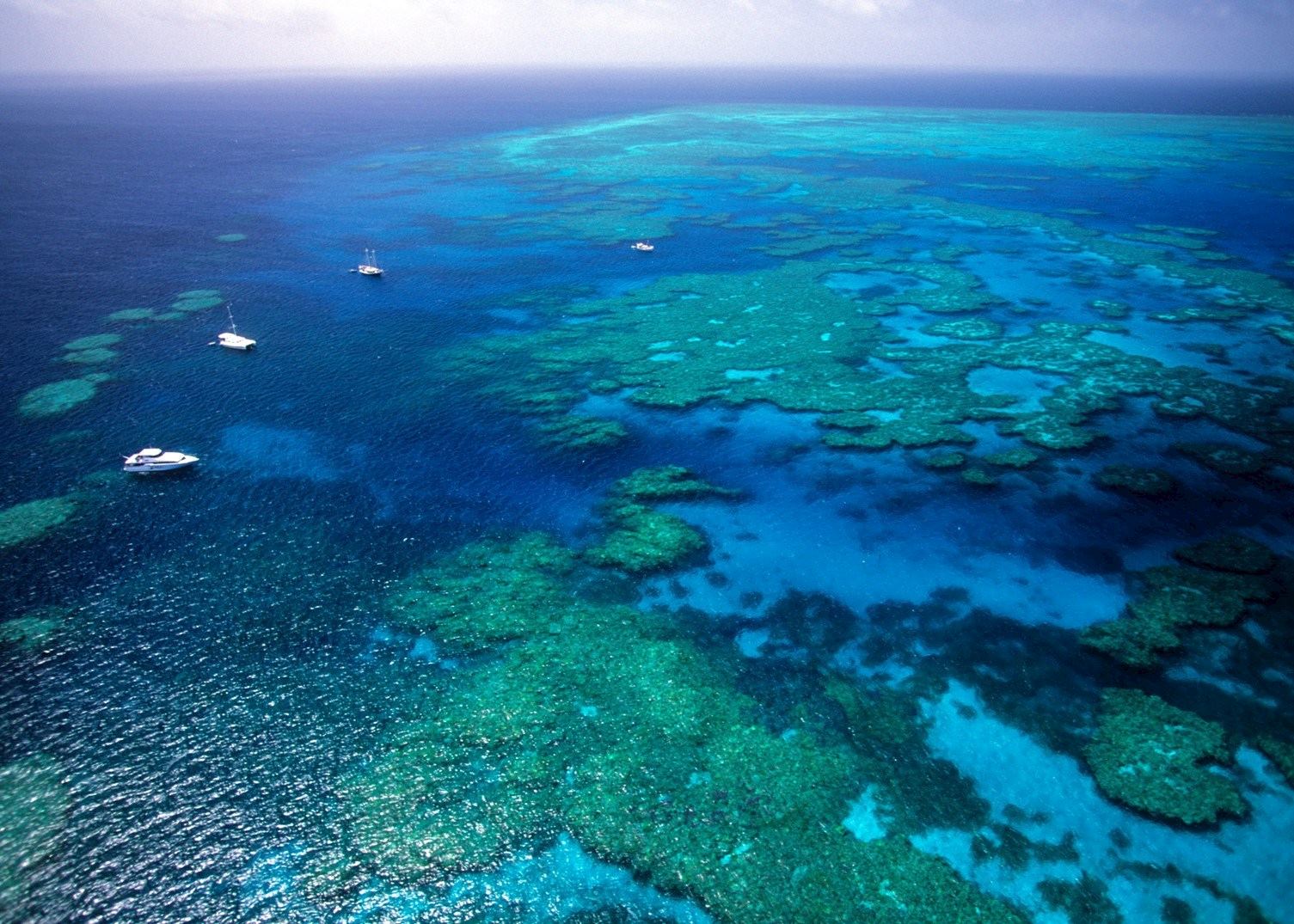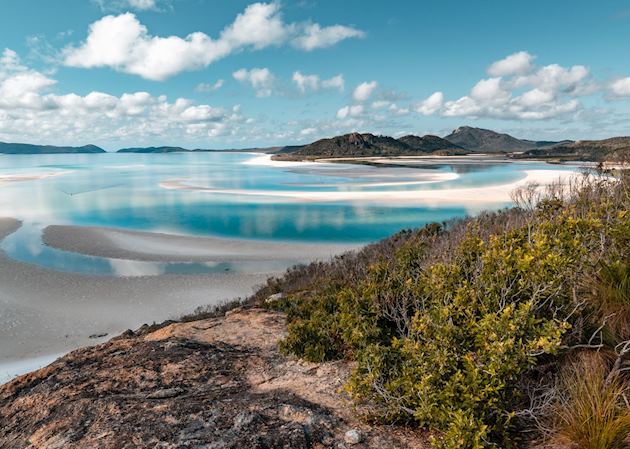Just off the coast of Queensland in Australia are the islands of the Great Barrier Reef. Some are tiny specks, others little more than sandy cay swirls, crowded with seabirds, but all are spectacular and worthy of their UNESCO World Heritage status.

The reef is now the destination for over two million visitors each year who come to dive and snorkel amongst the myriad of marine life.
The Great Barrier Reef is one of the natural wonders of the world. Stretching 2,300 km (1,429 miles) from the tip of Cape York in the north to Bundaberg in the south, it is the world’s largest collection of coral reefs, home to an abundance of marine and bird life and, as a result, was awarded World Heritage status by UNESCO in 1981.
Such an impressive natural wonder has inevitably featured heavily in Australia’s history. The Aboriginal tribes of Australia and the Torres Strait Islanders have been living here for over 40,000 years. During this time they moved around the reef, travelling in outrigger canoes as they fished the waters and over time the area became an important cultural site for these indigenous peoples.
It was not until 1770 that the reef was officially documented during James Cooks’ expedition on the ship HM Bark Endeavour. After exploring the cooler waters of the southern coast, Cook sailed north hugging the coastline and on Whit Sunday discovered a group of islands that were later named the Whitsunday Islands. The actual coral reef was abruptly found when the ship hit the reef, ripping a sizeable hole in the bow and several weeks were spent repairing the vessel on a river which he later named Endeavour, a settlement now known as Cooktown.
From these pioneering beginnings, the reef is now the destination for over two million visitors each year. They come to dive and snorkel among the myriad of marine life that includes 1,500 species of fish, 30 species of whale, 6 of the world’s 7 known species of turtle, 125 species of shark and an array of dolphin, including the snubfin dolphin. The sheer diversity of wildlife does not end at the water’s edge, with the reef being home to more than 200 species of bird and the occasional saltwater crocodile.
Great Barrier Reef Facts
- Length of the Reef: 2,300 km (1,429 miles).
- Width of the Reef: 24 km (15 miles) wide in the north and 240 km (149 miles) wide in the south.
- The total size of the Reef:
![The Great Barrier Reef The Great Barrier Reef]() 35 million hectares (equivalent to almost 1½ times the size of Britain).
35 million hectares (equivalent to almost 1½ times the size of Britain). - Species of fish: 1,500.
- Species of coral: 400.
- Species of molluscs: 4000.
- Established as a National Marine Park: 1975.
- Water temperature: 22 to 28 Degrees Celsius.
- Best time to visit: July to December.
- Awarded UNESCO World: 1981
Visitors to the reef have a variety of options of where to base themselves along the Queensland coast. One option is the Whitsundays.
As you would expect, such a fragile ecosystem is not immune to the general threats facing the environment. The increasing population of the east coast of Australia has led to the increasing levels of man-made substances such as pesticides, sewage, and detergents which flow from the rivers out to the Great Barrier Reef. In addition, the rising sea temperatures brought about by global warming have impacted on the coral reef, through a process known as coral bleaching. Severe instances of this occurred in 1998 and 2002, affecting over 42% of the coral and studies predict that it is likely to happen again in the coming years.
These developments have caused worldwide concern and the Australian government is now working on a number of projects designed to safeguard the reef for future generations. One initiative has been the zoning of the Great Barrier Reef Marine Park through the establishment of the world’s largest network of marine sanctuaries. These areas seek to conserve the diversity of the reef and account for 33% of the total reef. Other projects include the Reef Water Quality Protection Plan which seeks to assist farmers in improving their land management practices, with the ultimate aim of improving the quality of water on the reef itself.
Visitors to the reef have a variety of options of where to base themselves along the Queensland coast. One option is the Whitsundays; a collection of 74 beautiful islands that is the gateway to the Barrier Reef. A number of the islands have been designated as national parks while a few offer a wide selection of accommodation. Once here, you can spend time relaxing on the white sand beaches and snorkelling in the calm waters of the reef. Alternatively, spend a few nights sailing around the islands to get a real understanding of the surrounding ecosystem a well as spending a tranquil night or two in the open sea.
In contrast, the northern Queensland area around Cairns is the perfect gateway to the reef. From here, professional guided tours will take you out for a fantastic day of either diving, snorkelling or, for those that don't care to get wet, there is always the glass bottom boat and underwater viewing platform. If you want to truly witness the splendour and niqueness of this natural wonder of the world you can take advantage of helicopter and light aircraft flights to see the sheer magnitude and beauty of this National Marine Park from above.
Was this useful?



 35 million hectares (equivalent to almost 1½ times the size of Britain).
35 million hectares (equivalent to almost 1½ times the size of Britain). 
